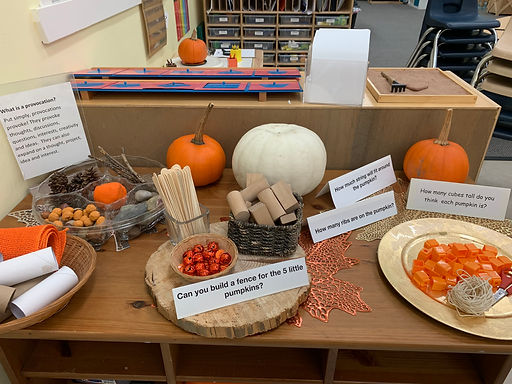
Kindergarten Program
Full-Day Kindergarten Program
(8:20 AM - 3:00 PM)
Our Kindergarten program nurtures the whole child through play and provocations to activate children’s thinking. Supporting growth in all areas of development, we balance a strong academic foundation with the valuable benefits of hands-on, exploration-driven experiences. Giving young students “choice and voice” to share their interests and perspectives empowers them to invest in their own learning.

Here’s what your child will experience in our full-day program:
-
Play-Based Learning: More time for exploration and learning through play, both indoors and outdoors.
-
Evidence-Based Literacy Approach: Explicit, systematic instruction to build strong reading and writing skills using structured literacy and the Science of Reading. Building confident readers, writers and spellers from the start!
-
Foundational Numeracy: Engaging, hands-on, inquiry driven activities to develop a love for math and to build early mathematical minds!
-
Developmentally Appropriate Activities: Activities that support growth in all areas – cognitive, language, social-emotional, and physical development.
-
Outdoor Education and Nature-Based Learning: Frequent outdoor activities that connect children to nature, fostering curiosity and environmental awareness.
-
Social-Emotional Skills: Opportunities for children to develop self-regulation, build positive relationships with peers and teachers, and grow emotionally
-
Hands-On Experiences and S.T.E.A.M: Engaging and hands-on activities that promote inquiry, creativity, and deeper thinking.
-
Arts In Education: Engaging in drama, movement, visual arts, and music helps children explore their imagination, improve problem-solving skills, and express themselves in unique ways. These activities encourage emotional development, boost self-confidence, and foster a deeper understanding of the world around them.
-
Cultural and Community Connections: Learning about their local community, different cultures, and the natural world around them.
-
Extended Learning Opportunities: Field trips, nature walks, and special visitors enhance learning beyond the classroom.
Why Full-Day Kindergarten at Riverbend Community School?
-
More Individual Attention: Teachers have more time to work closely with children in small groups, supporting their unique learning needs.
-
In-Depth Learning: The extended day allows for deeper exploration of topics based on both the curriculum and children’s interests.
-
Ongoing Assessment: Teachers conduct authentic, developmentally appropriate assessments to monitor progress and adjust support as needed.
-
Family and Community Communication: Teachers engage regularly with families to keep them informed and involved in their child’s learning journey.
Our program creates a nurturing, enriching environment for children to thrive and learn through curiosity and creativity!








